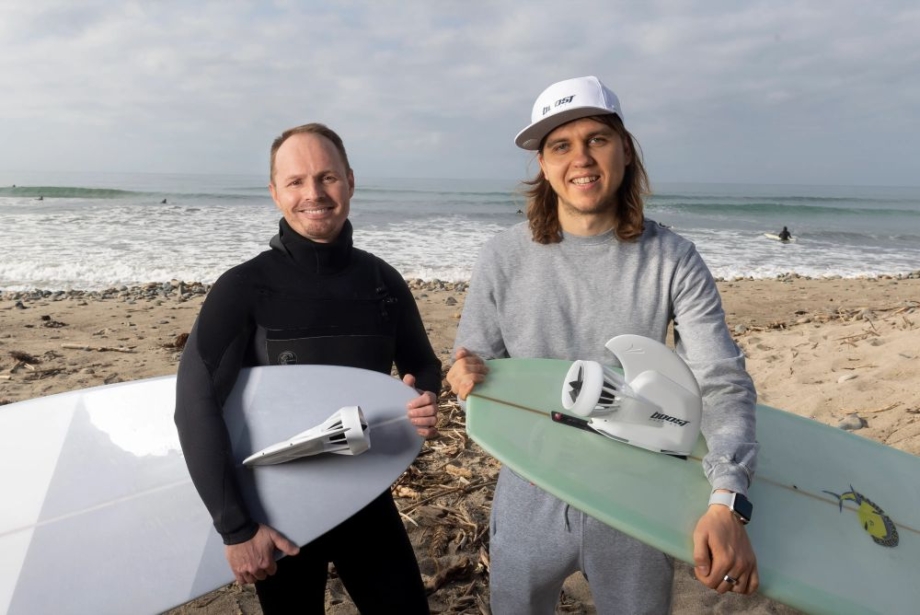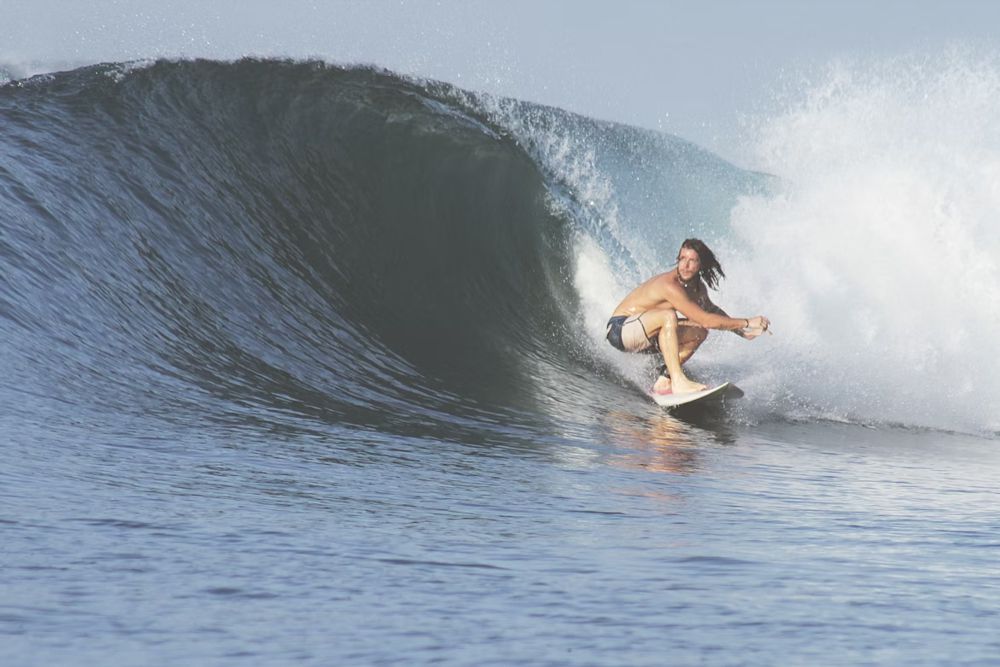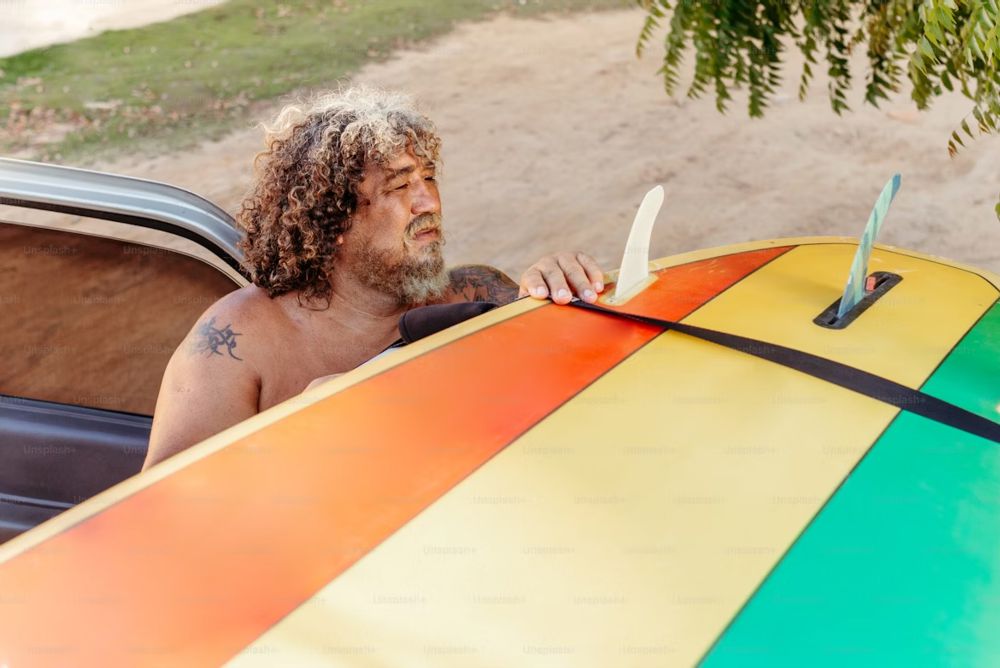Surfing Age: When to Start and When to Stop?

What age to start surfing? Surfing seems to be a young person’s game – statistics show it’s dominated by those between 6 and 34 years old. However, many professional surfers reach their peak performance in their mid-thirties or even forties, proving that age doesn’t have to be a barrier.
This article explores what the surfing age is and discovers how this sport can be a fantastic choice for all members of your family. Let’s learn how to catch waves and refine your surfing skills regardless of your age!
Is There an Age Limit for Surfing?
Can you learn to surf at any age? Is there a minimum age to start surfing? Unlike some sports that can be physically demanding, surfing offers a welcoming environment for participants of all ages.
On the younger end, boys and girls as young as 3 years old can begin familiarizing themselves with the ocean and the basic principles of balance on a surfboard. Safety remains the top priority at this stage, with instruction typically provided by a qualified professional in a shallow, calm area. The focus here might lie on building comfort in the water, paddling techniques, and basic pop-ups (standing on the board).
Conversely, there are numerous examples of surfers continuing to enjoy the sport well into their senior years. Surfing legends like Woody Brown and John H. “Doc” Ball serve as inspiring examples, having continued to shred waves well past their 80s. Their dedication and commitment to the sport demonstrate that age doesn’t necessarily limit the ability to enjoy the thrill of riding a wave.
Therefore, it’s safe to say that there’s no set surfing age limit. With proper instruction, a healthy respect for the ocean, and a positive attitude, anyone can enjoy the thrill of catching a wave.
What are the Ideal Ages to Start Surfing?
Surfing can be enjoyed at any age, even a 5-year-old kid can start learning under supervision. However, there are distinct advantages and disadvantages to consider depending on your stage in life. Understanding these differences can help you optimize your surfing experience.
Start Surfing When Being Young (Advantages and Disadvantages)
Young surfers, in particular, may find themselves at an advantage when pondering the best time to embark on this aquatic adventure. Let’s explore the advantages and disadvantages of learning to surf at a young age.

Advantages of Starting Surfing When Young
- Physical Development: Children naturally possess greater flexibility and a lower center of gravity, which can aid in balance and maneuvering on the surfboard. This can make it easier to learn proper techniques from the outset.
- Fearlessness and Openness to Learning: Youngsters often approach new activities with less fear and apprehension compared to adults. This can make them more receptive to instruction and willing to experiment in the water, leading to faster progress.
- Strength and Endurance Building: Surfing is a full-body workout that engages various muscle groups and improves cardiovascular health. Starting at a young age allows for consistent development of these physical attributes throughout the growth stages.
- Lifelong Passion: Fostering a love for surfing early on can cultivate a lifelong passion for the sport. The sense of accomplishment and connection with the ocean can provide enjoyment and physical activity for years to come.
Disadvantages of Starting Surfing When Young
- Safety Concerns: Young children may lack the physical strength and cognitive awareness necessary to handle themselves safely in the water, particularly in challenging ocean conditions. Adult supervision is crucial to ensure their well-being.
- Attention Span and Focus: Younger children might have shorter attention spans and struggle to retain complex instructions. Surf lessons may need to be adapted to accommodate their developmental stage.
- Risk of Injury: Surfing inherently carries a risk of injury, especially when falling off the board. While wipeouts are common for all surfers, younger children’s bodies may be more susceptible to impact injuries.
Start Surfing When Being Older (Advantages and Disadvantages)
Are you dreaming of catching waves but worried you might be starting a little late? The good news is, there’s no age limit on surfing! Let’s explore the advantages and disadvantages of taking up surfing as a mature beginner. Although you’re in your mid-30s or mid-60s, you can still master the waves with enjoyment.

Advantages of Starting to Surf Later in Life
- Financial Independence: Individuals who wait to take up surfing may have greater financial resources available to them compared to their younger counterparts. This can be beneficial for covering the costs of lessons, equipment, and travel to surf destinations.
- Developed Strength and Coordination: Adults tend to have a stronger foundation in terms of overall strength and coordination compared to children. This can make it easier to learn paddling techniques, balance on the board, and maneuver in the water.
- Health Benefits: Surfing offers a fantastic form of exercise, promoting cardiovascular health, balance, and core strength. These benefits can be particularly appealing to those looking to prioritize their health as they age.
Disadvantages of Starting to Surf Later in Life
- Physical Limitations: Balance, flexibility, and cardiovascular endurance naturally decline with age. This can make the initial stages of learning to surf more challenging for older beginners.
- Recovery Time: Muscles and joints may take longer to recover from the physical demands of surfing than those of younger individuals. This can necessitate more rest days and a slower learning pace.
- Risk of Injury: The risk of injuries, such as falls and muscle strains, is generally higher for older surfers. Careful consideration of physical limitations and a focus on proper technique are essential.
How can Surfers Continue Their Passion After 30?
Here are some ways surfers can continue enjoying their passion for riding waves well into their thirties and more.

Choose The Right Surfboard and Paddle Board
Surfing after surfing age (often considered to be over 30) can be just as rewarding as it was in your youth. However, with age comes a natural decline in physical abilities. Selecting the appropriate surfboard or paddle board can significantly enhance your experience in the water. Here are some options you may consider when reaching this milestone of your surf age:
- High-performance longboards offer a good balance of stability and maneuverability, ideal for catching waves and performing cutbacks and nose rides.
- Classic longboards provide exceptional stability, perfect for those prioritizing a smooth ride and relaxed paddling.
- SUP surfboards combine the paddling ease of a stand-up paddle board with wave-riding capabilities, perfect for catching small waves and enjoying the glide.
Stretch Regularly
Maintaining flexibility is crucial for surfers of all ages, but especially for those entering surf middle ages. Stiffness and a loss of flexibility are common occurrences that can hinder paddling technique and increase the risk of injury.
A dedicated stretching routine that targets major muscle groups, particularly the hamstrings, back, and shoulders, should be incorporated into a regular exercise regimen. Daily stretching, even if for a short period, is highly recommended.
By improving flexibility, surfers can ensure they can move freely and comfortably on the water.
Listen to Your Body
One of the biggest challenges surfers face after surf Middle Ages is the urge to push themselves beyond their limits. It’s important to become attuned to your body’s signals.
If you’re feeling fatigued, take a break. Don’t be afraid to skip surfing sessions when your energy levels are low. Listen to your body and prioritize recovery over pushing through pain. This will allow you to continue enjoying surfing for years to come.
Use Boost Fins to Assist Your Paddle
Boost Fins can give surfers over 30 an excellent boost on their surfboards or SUPs.
These specialized electric fins greatly enhance paddling efficiency by optimizing water flow and reducing drag. This translates to less fatigue, allowing surfers to catch more waves and spend more time riding with excitement instead of paddling.

Therefore, Boost Fins are particularly helpful for all ages, particularly seniors. In challenging paddling conditions, such as strong currents or choppy waters, they assist surfers to conserve energy for wave riding and maneuvers.
It’s a fantastic way to keep the adventure alive, ensuring the joy of surfing remains accessible and enjoyable at any age!
Enjoy Endless Journey with Boost Fin
While there’s no definitive surfing age restriction, factors like physical ability and comfort in the water influence the ideal starting point. Children can begin as early as 3 with proper guidance, while seasoned surfers continue well into their later years.
Ultimately, the best age to start surfing is whenever you feel the pull of the ocean and the desire to ride a wave. Embrace the challenge, prioritize safety, and with dedication, you’ll experience the immense satisfaction that comes with conquering a wave.
Boost Fin is proud to be your partner on this endless journey, offering a range of fins designed to enhance your performance and maximize your enjoyment on the water. Visit our website today to discover the perfect fin to propel you towards unforgettable surfing experiences!
